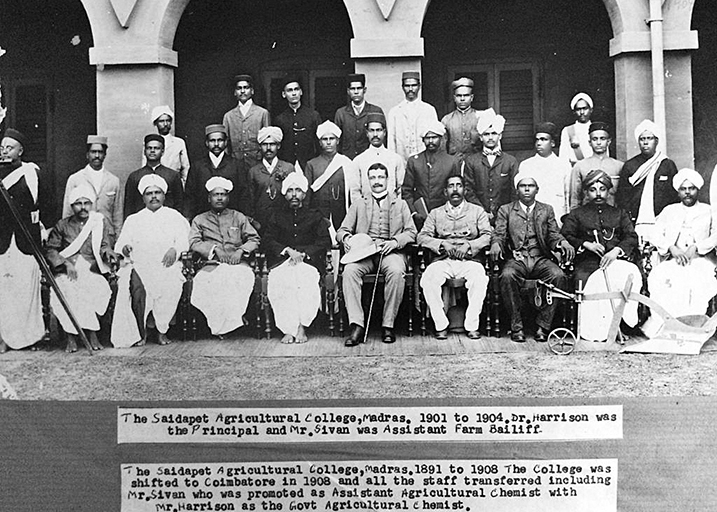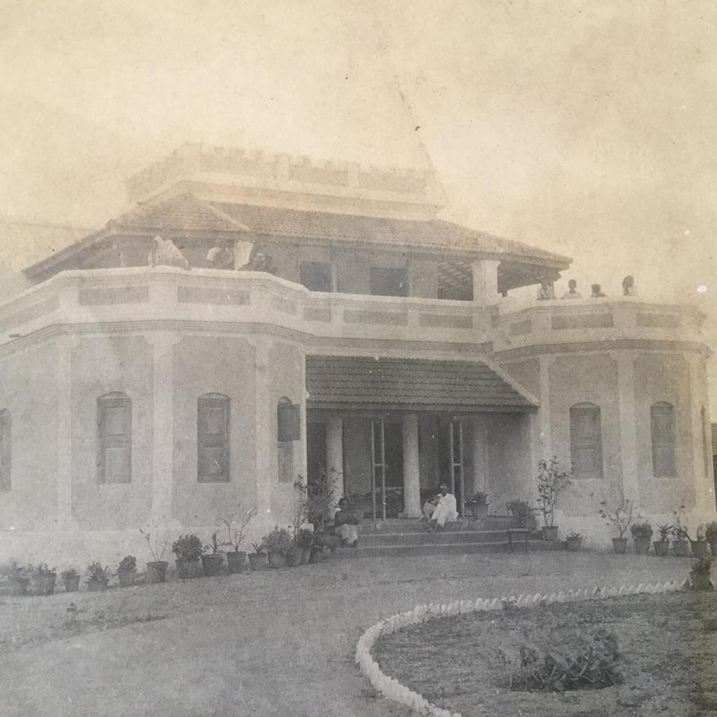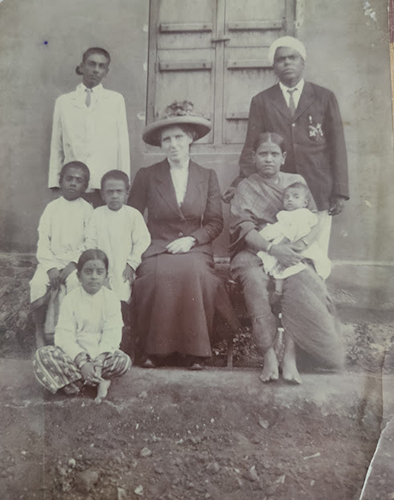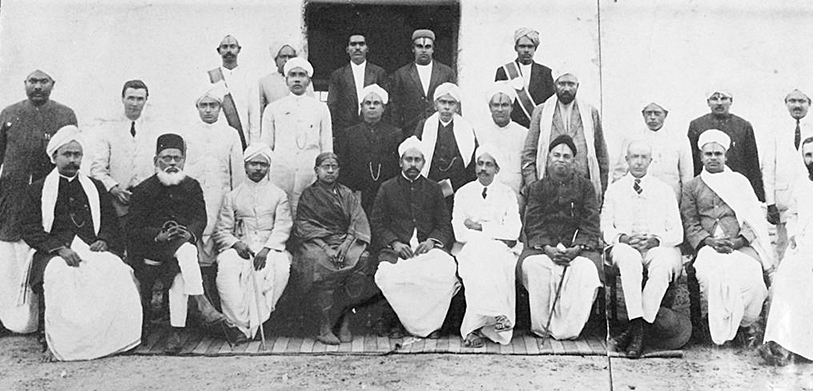Registered with the Registrar of Newspapers for India under R.N.I 53640/91
Vol. XXXI No. 18, January 1-15, 2022
Tracing the family roots – I
by Jayanthi Ramesh
A recent train trip to visit my daughter in Coimbatore brought about many nostalgic memories for our family. I was aware all along that our ancestors led very enterprising lives and many created milestones in their careers. Even though I had interacted with some of them in my younger days, it never crossed my mind to delve deeper into their personal and academic life. This visit to Coimbatore brought back some memories, fuelled also by my siblings. My sister from Pondicherry immediately jumped at this opportunity and joined us in Coimbatore after a few days. So, here is the story.
Rao Bahadur Manamadurai Ramaswami Sivan was born in 1870. He was married to Lakshmi and had six children, all of whom very creditably marked an imprint in their respective careers. M.R. Balakrishnan (FAO, Bangkok, father of late M.B. Srinivasan, music director), M.R. Venkatraman (Rajya Sabha member and CPI (M) leader), M.R. Krishnaswamy (Veterinerian), M.R. Kalyan Sundaram (Sugar Technologist, Pugalur Sugar Factory (EID Parry) and my father), Alamelu (first to get the doctorate in Music from Madras University and associated with Kalakshetra), and Govindabai (M.A, History Professor). Alamelu was married to S.A. Govindarajan who was with The Hindu for over thirty years and Govindabai, aka Kamla Mani was married to A.D.Mani, Editor of Hitavada in Nagpur.
My paternal grandfather, Ramaswami Sivan was the first Indian Principal of the Coimbatore Agricultural College, which is now the Tamil Nadu Agricultural University. Established as the Agricultural School at Saidapet, Madras, in 1868, it was later relocated at Coimbatore. The construction of this research institute was started in 1907 and completed in 1909. The total area was 500 acres and architectural style was Hindu-Sarcenic, made of red table-moulded brick in mortar and finely dressed cutstones. The clock tower is 75 feet in height and still tells the correct time. The first Principal was J.W. Shepperson, a Britisher, followed by others. Indian scientists also got the opportunity to steer the administration as Principals and Heads of Research Institutes. Rao Bahadur Ramaswami Sivan was the first Indian Principal (1926-27), followed by Dewan Bahadur C.Tadulinga Mudaliar, Rao Bahadur P.H. Rama Reddy, Rao Bahadur D. Ananda Rao, Rao Bahadur S. Sundararaman and others.

The Saidapet Agricultural College, Madras – 1901-1904. Dr. Harrison was the Principal and Sivan was Assistant Farm Bailiff. The College was shifted to Coimbatore in 1908 and Sivan was promoted as Assistant Agricultural Chemist with Harrison as the Government Agricultural Chemist.
Thanks to the internet and with some contacts at the University, I spoke to the PRO, introduced ourselves, and got an appointment to meet with him on a Saturday. My sister, daughter and myself went to meet him at the appointed time. The sprawling campus on either side of the road took our breath away. The PRO was very happy to meet us and to learn of our connection with the College. He was kind enough to send two of his colleagues to accompany us and show us around the campus. We felt like we were transported to another era. We were shown the hall which was named after my grandfather. This was one of the newer buildings which was inaugurated by Sri C. Subramaniam, Union Minister for Food and Agriculture on 14th December 1966. Sri M. Bakthavatsalam, then Chief Minister, Madras, presided. Though recently built, the pillars were magnificent with carvings on them. What good is a visit without photographs so we went on to take some pictures to share with the family. It was indeed a very memorable and sentimental moment.
I also understand that Sivan invented a ‘malt’ for which the promised credit was taken away by a Britisher.

Sivan’s house in Coimbatore.
Sivan was a forceful and dynamic personality. He was born as Varadaraja Sarma on 15th November 1870. While at St.Joseph’s College, Trichy, he was inspired by the spirit of the times and the fight against the British. He fought for religious independence, participated in protests and was branded a rebel. He was a good singer as well and used to go around the temples singing thevarams. He got his name Ramaswami Sivan as Sivan was a title conferred on ardent Saivites. He was a freemason, theosophist, unconventional and unorthodox . He could not tolerate injustice of any kind and put his preachings into practice. He was very fond of his wife, Lakshmi and treated her as his equal. He was never bothered about what people would say. He encouraged her to read and write in English and it is no wonder this passion stayed with her when even at the age of 80 she wanted to learn Telugu. He engaged an English lady to tutor his children as far back as 1914.

Sivans four sons and Meenamma along with their English tutor.
Lakshmi Sivan became a prominent member of the National Indian Womens Association and was the only woman in the District Education Council in Coimbatore in 1924. In fact she is supposed to have chaired a meeting with Rajaji and Ambedkar during her days in Coimbatore. The entire family had great interest in music.
Harikesanallur Muthiah Bhagavathar gifted one of his thamburas to my grandmother when they were living in Gopalapuram in Madras. My sister who trained under the late D K Jayaraman is the proud owner of this thambura till date.

The District Educational Council, Coimbatore, 1924.
Lakshmi Sivan’s sisters were no less achievers. While Lokasundari, a crusader for women and child welfare married Sir C.V. Raman, another sister’s daughter Meenamma was the first woman sound engineer to work in cinema. She married film director A. Narayanan. So, the women in the family too brought laurels by passionately following their careers.
As per the notes in the old diaries left behind by my paternal grandfather Ramaswami Sivan, it is believed their ancestors originally lived in Kanya Kabja (the land between the Ganga and the Jamuna) for the reason that the Shandilya Gothra is not prevalent in any other part of India. From there they should have migrated to somewhere on the banks of the Narmada river, as they also recited a prayer daily to the river Narmada.
(To be continued next fortnight)

